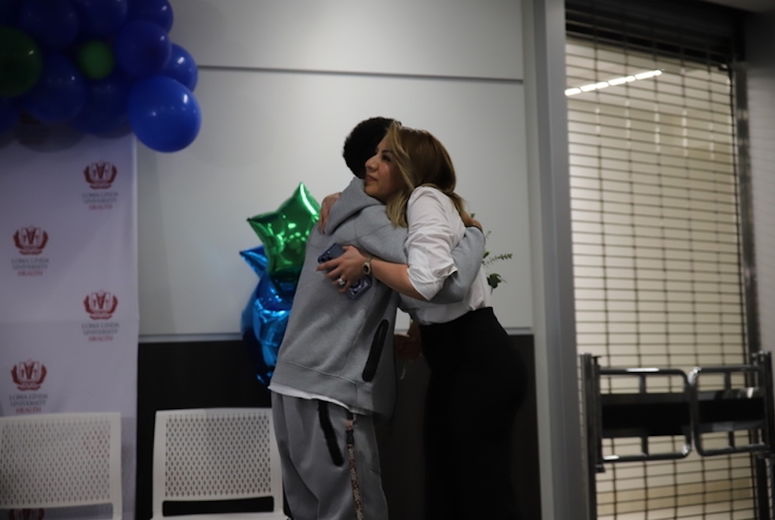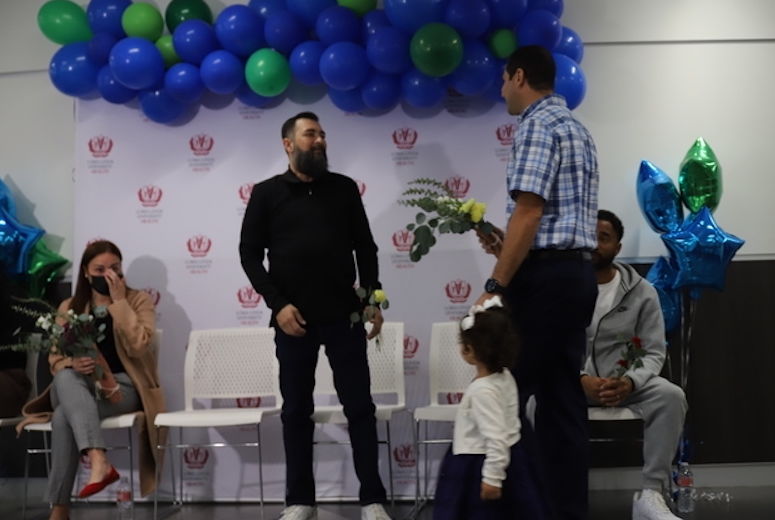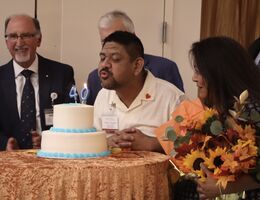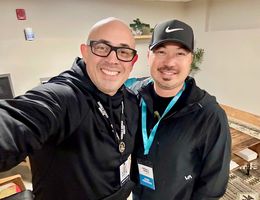
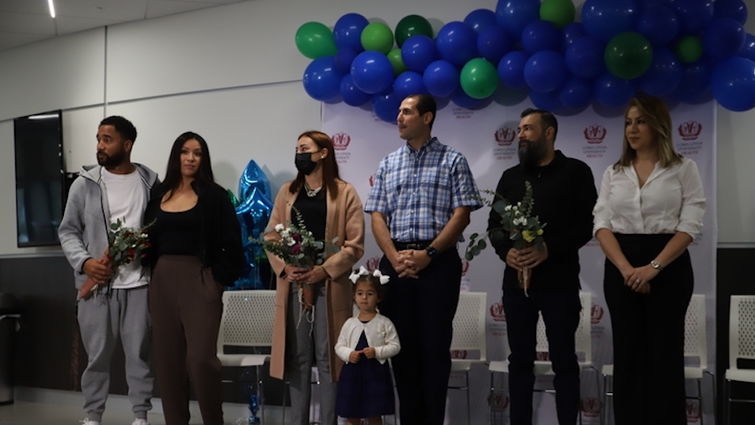
In a moving celebration of generosity and resilience, three couples met for the first time on Tuesday, April 15, at Loma Linda University Health Transplant Institute after participating in a living kidney donation chain that gave each of them a second chance at life.
The event marked the first in-person meeting of six individuals—three patients and their spouses—whose lives were forever changed by a kidney donation chain. Each donor initially hoped to donate to their own spouse, but when medical incompatibilities arose, they instead chose to donate to a stranger through a paired kidney exchange. In return, their spouse received a compatible kidney from another donor in the chain.
“These donors are not only heroes to their spouses — they are heroes to the people sitting next to them,” said Rafael Villicana, MD, medical director of the Transplant Institute. “They exemplify the power of love, medical innovation, and a community that believes in giving to one another.”

Ashley Dade, donor, and Florencia Cortes Navarro, recipient, meeting for the first time.
Each donor entered the room one at a time, presenting flowers and meeting their recipient for the first time. Emotional embraces and words of gratitude filled the room as new bonds formed between strangers united by shared purpose and love for their spouses.
Ashley Dade gave her kidney to Florencia Cortes Navarro, who had been living with Type 1 diabetes. Florencia’s husband, Jalal Mango, then donated to Jerry Luna, who suffered from polycystic kidney disease. Jerry’s wife, Laura DeLuna, completed the chain by donating to Khy Dade, whose kidneys were failing due to a genetic disorder called Focal Glomerular Sclerosis.
Prior to the exchange, Khy was on dialysis for four years, while Jerry was on the national wait list for 10 years and had dialysis every day for 10 hours.
All donors and recipients are healthy and thriving after the successful swap in December 2024.
According to UNOS, more than 90,000 people in the United States are currently on the waiting list for a kidney transplant, and the need far outpaces the number of deceased donors available each year. Living kidney donation offers patients a faster path to transplant and better long-term outcomes, especially when paired exchange programs connect incompatible pairs to others in similar situations.
“Even if you are not a match for your loved one, it gets your foot in the door for an exchange like this to take place,” said Michael de Vera, MD, director of the Loma Linda University Health Transplant Institute. “Altruistic donors who are moved to donate to a stranger merely for the sake of helping others also play a crucial role in jumpstarting kidney donation chains.”
Do you feel called to donate an organ? Loma Linda University Health is home to the region’s only comprehensive multi-organ transplant center, offering expert care and innovative solutions for patients in need of kidney and liver transplantation. Learn more about the Living Donor Program’s process and criteria.

